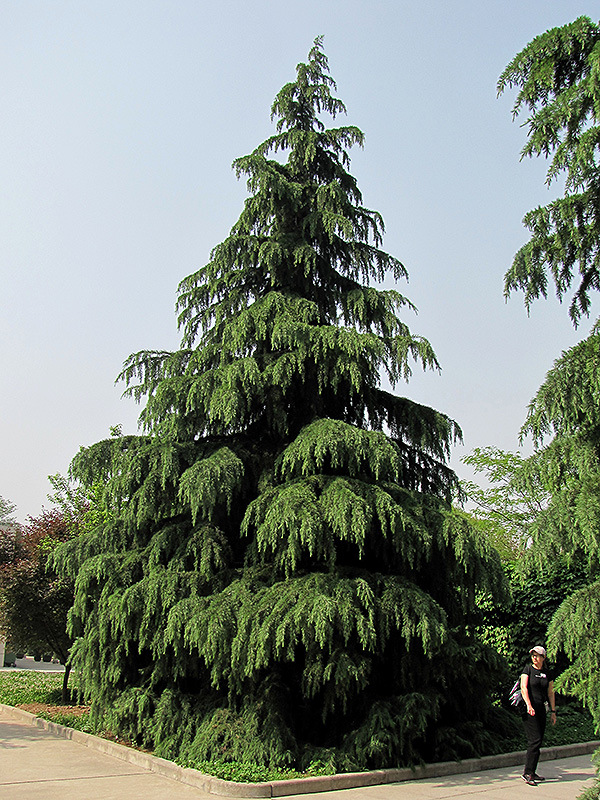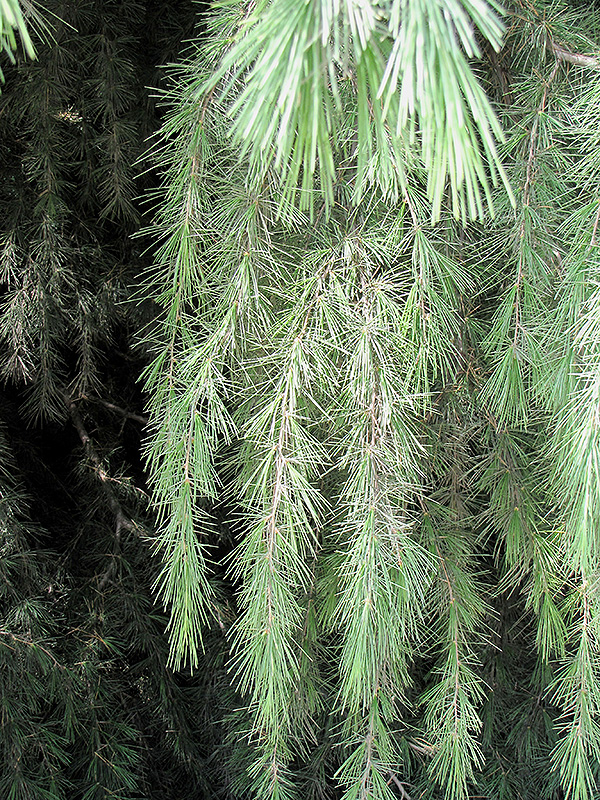Cedar (Deodara), Kashmir Cedrus deodara 'Kashmir' Height: 25 feet Spread: 15 feet
Sunlight:
Hardiness Zone: 5b Other Names: Kashmir Himalayan Cedar Description: A grand tree with a broad habit of growth, pendulous branches bear fine silvery blue needles; best used for its majestic architectural qualities as a solitary landscape accent, needs lots and lots of space to grow for full effect Ornamental Features Cedar (Deodara), Kashmir is primarily valued in the landscape for its distinctively pyramidal habit of growth. It has attractive silvery blue evergreen foliage which emerges powder blue in spring. The small needles are highly ornamental and remain silvery blue throughout the winter. However, the fruit can be messy in the landscape and may require occasional clean-up. Landscape Attributes Cedar (Deodara), Kashmir is an evergreen tree with a strong central leader and a distinctive and refined pyramidal form. It lends an extremely fine and delicate texture to the landscape composition which can make it a great accent feature on this basis alone. This is a relatively low maintenance tree, and can be pruned at anytime. Deer don't particularly care for this plant and will usually leave it alone in favor of tastier treats. It has no significant negative characteristics. Cedar (Deodara), Kashmir is recommended for the following landscape applications; Planting & Growing Cedar (Deodara), Kashmir will grow to be about 25 feet tall at maturity, with a spread of 15 feet. It has a low canopy with a typical clearance of 5 feet from the ground, and should not be planted underneath power lines. It grows at a medium rate, and under ideal conditions can be expected to live for 80 years or more. This tree does best in full sun to partial shade. It does best in average to evenly moist conditions, but will not tolerate standing water. This plant should be periodically fertilized throughout the active growing season with a specially-formulated acidic fertilizer. It is not particular as to soil type or pH. It is somewhat tolerant of urban pollution, and will benefit from being planted in a relatively sheltered location. This is a selected variety of a species not originally from North America, and parts of it are known to be toxic to humans and animals, so care should be exercised in planting it around children and pets. Special Attributes These evergreens do shed inside foliage in the autumn or spring. Cedars have male and female reproductive parts on one tree. 1 3/4-2 inch Male flowers are catkins or pollen cones and are on lower branches in autumn. Blue female cones grow upright on higher branches getting 3 3/4 inches, taking 2 years to mature. Evergreens need to be watered during the winter. Our desert climate especially in late winter to early spring evergreens can suffer during next growing season. An easy way to remember check for dryness on the holidays Halloween, Thanksgiving, New Year's Day, Valentines Day & Easter.![]()
![]()
![]()
![]()
![]()
![]()
![]()
![]()
![]()
![]()
![]()
![]()


